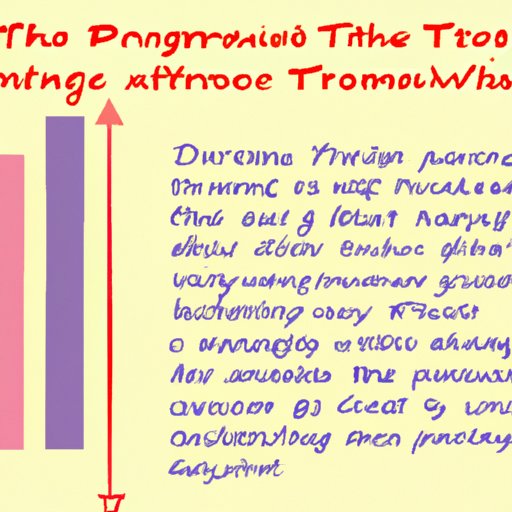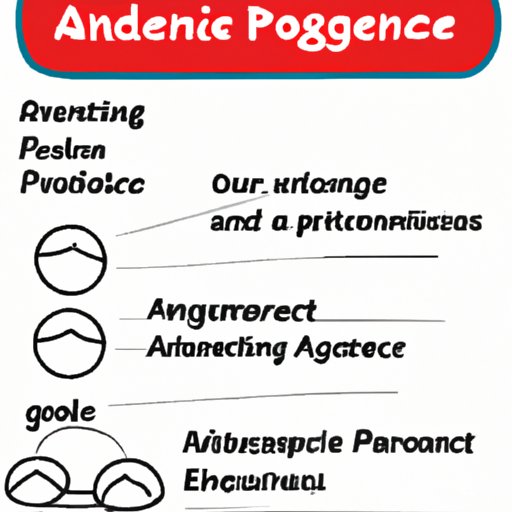Introduction
Knowing your audience is an essential part of any successful writing endeavor. Whether you’re crafting blog posts, articles, white papers or even creative works, understanding who you’re writing for is key to achieving your desired outcome. But what exactly is audience in writing?
In its simplest form, an audience is the group of people a writer hopes to connect with through their work. This could be a small number of people, such as a professional network, or a large group such as readers of a particular genre. In any case, it’s important to understand who you’re trying to reach, so that you can craft content that resonates with them.
The purpose of this article is to explore what is audience in writing, how to identify and reach your target audience, examine strategies for engaging with them, and investigate the benefits of writing for a specific audience.

Exploring How to Identify Your Target Audience
Knowing your audience is the first step in creating effective writing. But how do you go about identifying your target audience? Here are three steps you can take to get started:
Analyzing Your Content and Purpose
The first step in identifying your audience is to analyze your content and purpose. What is the overarching message you’re trying to convey? What topics will you be covering? Are you writing to inform, entertain, persuade or inspire?
Answering these questions will help you narrow down who you’re writing for. For example, if you’re writing a blog post about the latest advances in artificial intelligence, your target audience will likely consist of tech-savvy professionals.
Assessing Your Target’s Interests and Needs
Once you’ve identified the topics you’ll be covering, the next step is to assess your target’s interests and needs. What do they care about? What do they need to know? Understanding what your target audience wants and needs will help you create content that resonates with them.
Researching Your Target Audience
The final step in identifying your target audience is to conduct research. Look at websites and publications your target audience is likely to visit. Read up on industry trends. Figure out where your target audience hangs out online. All of this information will help you better understand who you’re writing for.

Examining Strategies for Reaching Your Writing Audience
Once you’ve identified your target audience, the next step is to figure out how to reach them. Here are a few strategies you can use to boost your visibility and get your writing in front of the right people:
Utilizing Social Media
Social media platforms like Twitter, Facebook and Instagram are great tools for reaching your target audience. Use these platforms to promote your work and engage with your followers. Post links to your articles, start conversations and join relevant groups. These activities will help you build relationships and make connections with potential readers.
Using Search Engine Optimization
Search engine optimization (SEO) is another great way to get your writing in front of the right people. By optimizing your content for search engines, you can increase the chances of appearing in organic search results. This will help you reach more people and draw more traffic to your website or blog.
Engaging With Your Audience
Finally, don’t forget to engage with your audience. Respond to comments, answer questions, and provide feedback. This will show your readers that you value their opinion and help foster a sense of community. It will also help you build relationships and establish yourself as an authority in your field.
Understanding the Impact of Knowing Your Audience
Understanding your audience has many benefits, both for you and your readers. Here are a few key points to consider:
Creating Content That Resonates
Knowing your audience will help you create content that resonates with them. You’ll be able to tailor your message to their specific interests and needs, which will make your writing more engaging and effective.
Establishing a Relationship With Your Audience
Understanding your audience will also help you establish a relationship with them. You’ll be able to better understand their concerns and respond to their questions. This will help you build trust and loyalty, which are essential for long-term success.
Tailoring Your Message
Finally, knowing your audience will allow you to tailor your message to their specific needs. You’ll be able to craft content that speaks directly to them, which will help you stand out from the crowd and make a lasting impression.

Investigating the Benefits of Writing for a Specific Audience
Writing for a specific audience has many benefits, including:
Improving Your Chances of Being Read
By targeting a specific audience, you’re improving your chances of being read. People are more likely to read content that speaks directly to them, so by knowing who you’re writing for, you’ll be able to craft content that resonates with them.
Increasing Your Reach
Writing for a specific audience also allows you to expand your reach. You’ll be able to tap into new networks and connect with potential readers who may not have otherwise found your work. This will open up new opportunities and help you grow your audience.
Fostering Engagement
Finally, writing for a specific audience will help you foster engagement. When you understand who you’re writing for, you’ll be able to create content that speaks to their interests and needs. This will help you build relationships and encourage readers to come back for more.
Recognizing the Different Types of Writing Audiences
When it comes to writing audiences, there are several different types you should be aware of. These include:
Professional Audiences
Professional audiences consist of people who are knowledgeable and experienced in a particular field. These may include experts, academics, business leaders and policymakers. When writing for a professional audience, it’s important to use clear language and avoid jargon.
Casual Audiences
Casual audiences are less knowledgeable than professional audiences, but still interested in a particular topic. These may include hobbyists, casual readers and those who are just starting to learn about a subject. When writing for a casual audience, it’s important to keep your language simple and easy to understand.
Educated Audiences
Educated audiences are knowledgeable and well-versed in a particular field. These may include students, researchers and those who are highly interested in a subject. When writing for an educated audience, it’s important to use clear language and avoid overly technical terms.
Comparing the Different Ways to Connect With Your Audience
Connecting with your audience is an essential part of any successful writing endeavor. Here are a few ways to do it:
Building an Online Presence
Building an online presence is one of the best ways to connect with your audience. Utilize social media platforms and blogging to share your work and engage with your readers. This will help you build relationships and establish yourself as an authority in your field.
Developing a Personal Connection
Another way to connect with your audience is to develop a personal connection. Respond to comments and questions, provide feedback, and get to know your readers. This will show your readers that you value their opinion and help foster a sense of community.
Creating Engaging Content
Finally, creating engaging content is key to connecting with your audience. Craft content that speaks directly to your readers’ interests and needs. This will show that you understand who you’re writing for and help you build relationships with them.
Conclusion
In conclusion, understanding your audience is an essential part of any successful writing endeavor. It’s important to identify your target audience, understand their interests and needs, and create content that resonates with them. Knowing your audience will also help you reach more people, foster engagement, and establish yourself as an authority in your field.
By taking the time to understand who you’re writing for, you’ll be able to craft content that speaks directly to them. This will help you build relationships and ensure that your writing is read and appreciated.
(Note: Is this article not meeting your expectations? Do you have knowledge or insights to share? Unlock new opportunities and expand your reach by joining our authors team. Click Registration to join us and share your expertise with our readers.)
